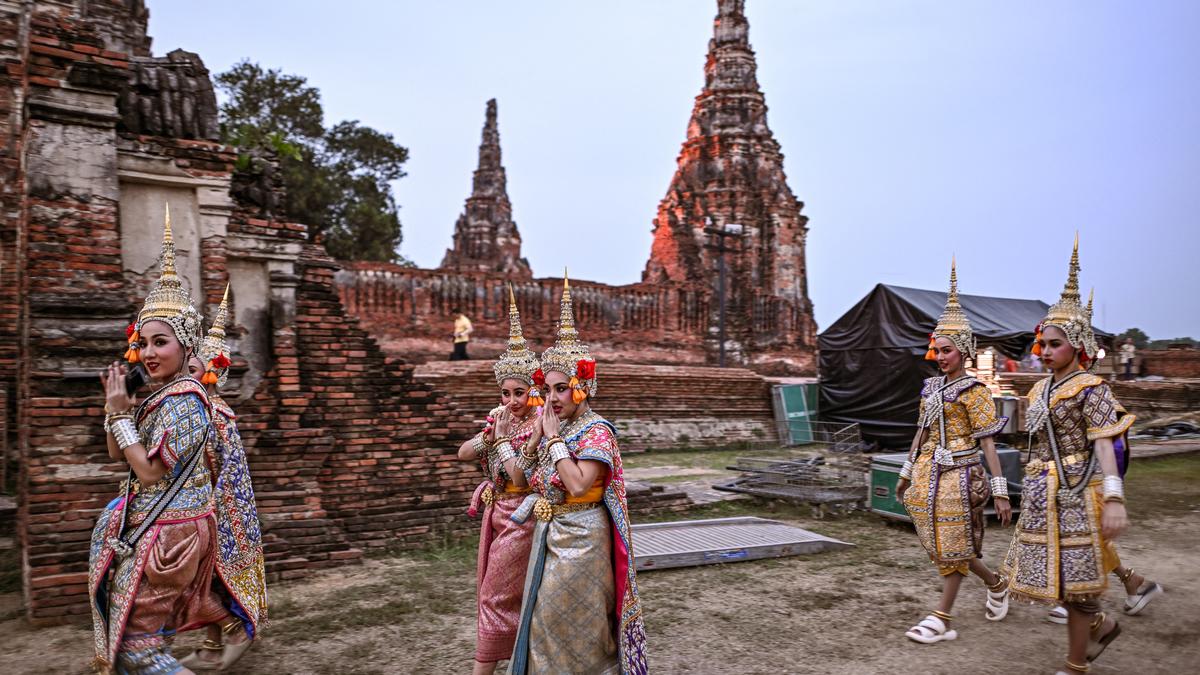The Other Ayodhya: Tracing the Legacy of Ram in Ayutthaya
History Indian HistoryPosted by NewAdmin on 2025-02-11 09:10:58 |
Share: Facebook | Twitter | Whatsapp | Linkedin Visits: 71

Ayutthaya: A Lost Ayodhya
In Thailand, the ancient city of Ayutthaya, once a thriving capital, stands as a testament to the influence of the Ramayana on Southeast Asian culture. Although now in ruins, the city was home to grand pagodas, temples made of brick and stucco, and countless Buddha statues, many of which are headless. This city was the capital of Thai kings for more than four centuries, until its destruction by the Burmese in the 18th century. Today, the remnants of Ayutthaya remain a symbol of the rich cultural exchange between India and Southeast Asia.
The Royal Connection to Ram
The figure of Ram in Ayutthaya was represented by the king, known as Ramathibodhi, a title which closely aligns with the name of Lord Rama in the Ramayana. In Thai society, the influence of the epic extends far beyond its narrative. The reverence for kings as semi-divine figures, similar to the deified portrayal of Ram, reveals how deeply ingrained the epic’s themes are in the region's historical and political fabric.
Cultural Echoes of the Ramayana
The impact of the Ramayana on Thai culture is still apparent in modern-day laws, particularly regarding the monarchy. There are strict laws in place that prohibit any form of criticism of the royal family, reflecting the idea that the king, like Ram, is beyond reproach. This reverence can be traced back to the ancient stories where even Ram was forced to abandon Sita due to public gossip, showcasing the cultural weight of honor and societal judgment in shaping royal conduct.
In the ruins of Ayutthaya, the story of Ram continues to resonate, reminding us of how ancient Indian epics crossed seas and shaped distant lands, leaving an indelible mark on their cultures and histories.
Search
Categories
- Sports
- Business
- History
- Politics
- International
- Science & Technology
- Social Issues
- Disaster Management
- Current Affairs
- Education
- Startup Business
- Startup News
- Awards
- Community Services
- Fundraising Events
- Volunteer Services
- Health Initiatives
- Innovations and Initiatives
- In News
- dummybanners
- Awards
- Partners
- Products
- Press Releases
- News
- Fast Check
- South
- సినిమా
- Gallery
- Sunday Chronicle
- Hyderabad Chronicle
- లైఫ్ స్టైల్
- National
- క్రైం
- ట్రెండింగ్
- జాబ్స్
- అంతర్జాతీయo
- బిజినెస్
- రాజకీయం
- బిజినెస్
- సంపాదకీయం
- నవ్య
- చిత్ర జ్యోతి
- క్రీడలు
- జాతీయం
- తెలంగాణ
- తాజా వార్తలు
- మన పార్టీ
- మన నాయకత్వం
- మన విజయాలు
- డౌన్లోడ్స్
- మీడియా వనరులు
- కార్యకర్తలు
- North East Skill Center News
- Government Schemes
- Entrepreneurship Support
- Employment Opportunities
- Skill Training Programs
- Departments
- Investments
- Initiatives
- Resources
- Telangana IT Parks
- Events & Jobs
- Press Releases
- News
- Airport News
- Newtons Laws of Motion
- Karbonn in Business
- Investments in Karbonn
- Company quarterly sales
- Markets
- Auto News
- Industry
- Money
- Advertisements
- Stock target
- Company Updates
- Stock Market
- Company Sales
- Staffing and HR
- Constituency Assembly
- General News
- Srikalahasti Temple
- Bojjala Sudhir Reddy
- Technology & Innovation
- Sports
- Business
- Products
- Industries
- Services & Trainings
- Tools & Resources
- Technology Integration
- Drug Seizures & Arrests
- Telangana Narcotics
- Law & Enforcement
- Rehabilitation
- Nationwide Drug Policing
- Nigeria Seizures
- Global Operations
- Drug Awareness
- Drug Enforcement Tech
- NCB Drug Seizures
- Judicial Crackdown
- India's Surveillance Tools
- Cross-Border Links
- Women Safety
- Cyber Crimes
- Drug Abuse
- Traffic & Road Safety
- Community Connect
- Public Safety Alerts
- Citizen Assistance
- Nellore City News
- Politics & Administration
- Events & Festivals
- Agriculture & Rural
- Business & Economy
- Health & Wellness
Recent News
- Former Vice President Jagdeep Dhankhar Not Yet Requested Official Residence Retainment
- Mopping Up Operations In Lok Sabha, Speaker Om Birla Calls For Introspection
- Last-minute disruptions mark final day of parliament's monsoon session
- Market regulator SEBI plans to extend equity derivatives tenure
- Stock Picks for February: YES Securities & Sharekhan Optimistic About These 5 Companies
- Ban On Real-Money Gaming: 45 Million People Lose Rs 20,000 Crore Each Year, Says Report
- From Porn To Cricket: How Garth Stirrat Rebounds From An Unorthodox Start
- Rift In Saaniya Chandhok's Family? Grandfather Accuses Son of Forgery And Fraud